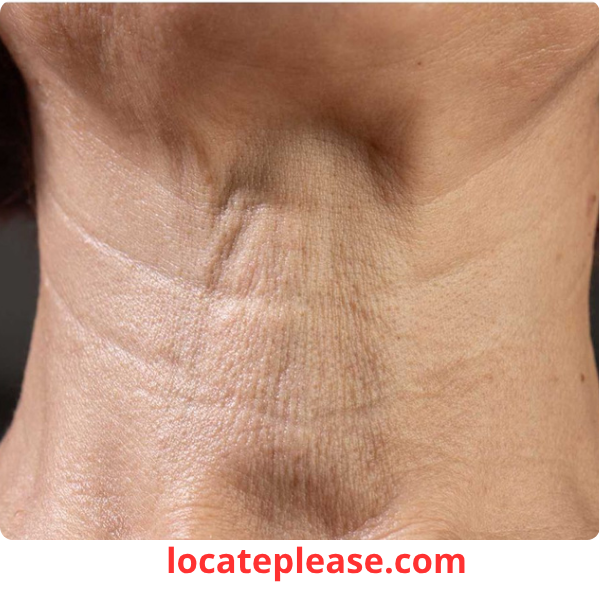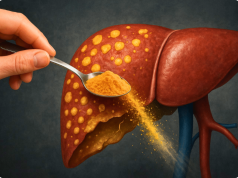You’ve maintained your skincare routine, you eat well, you’ve even mastered the art of flattering necklines — but suddenly, you catch a glimpse in the mirror and think:
“When did my neck start to sag?”
You’re not imagining it. The delicate skin and muscles of the neck are often the first to show signs of aging — and once sagging begins, it can progress quickly if left unaddressed.
Known colloquially as “turkey neck,” this condition — medically referred to as cervical laxity — affects countless people, regardless of gender. And while it’s a natural part of aging, understanding why it happens is the first step toward slowing it down — or even reversing it.
1. The Anatomy of the Neck: Why It’s So Vulnerable
The neck is a complex structure made up of:
- Thin, delicate skin
- The platysma muscle — a broad, flat muscle that runs from the chest up to the jaw
- Connective tissues and fat layers
Unlike the face, the neck has fewer oil glands, thinner skin, and less collagen — making it more prone to sagging and wrinkling. The platysma muscle, which helps control neck movement and facial expression, tends to weaken and separate with age, creating vertical bands and loose skin.
2. Aging: The #1 Culprit Behind Neck Sagging
As we age, our bodies produce less collagen and elastin — the proteins responsible for skin firmness and elasticity.
- After age 20, we lose about 1% of collagen per year.
- By the time you’re 40, your skin is noticeably thinner and less resilient.
- Without structural support, the skin on the neck begins to droop, and the jawline blurs.
This natural decline is inevitable — but it doesn’t have to happen quickly.
3. Sun Exposure: Accelerating the Clock
You likely wear sunscreen on your face — but what about your neck?
UV radiation is one of the biggest contributors to photoaging — premature skin aging caused by sun damage. The neck is often neglected in sun protection, making it a hotspot for:
- Collagen breakdown
- Wrinkles
- Uneven texture and discoloration
Even brief daily exposure — like driving in the car — adds up over time.
✅ Solution: Apply broad-spectrum SPF 30+ to your neck and décolletage every morning — every day, year-round.
4. Genetics: Why Some People Sag Earlier Than Others
Some people are simply genetically predisposed to earlier skin laxity. If your parents developed a sagging neck in their 40s or 50s, you may follow a similar path.
Genetics influence:
- Skin thickness
- Collagen density
- Fat distribution
- How your skin responds to gravity and environmental stress
While you can’t change your DNA, you can influence how it expresses itself through lifestyle and care.
5. Weight Fluctuations: The Yo-Yo Effect on Skin
Losing weight is healthy — but rapid or repeated weight loss and gain can take a toll on your neck.
- Skin stretched during weight gain may not fully rebound.
- Repeated stretching weakens collagen and elastin.
- The result? Loose, crepey skin that sags below the jawline.
Maintaining a stable, healthy weight is one of the best things you can do for skin tightness.
6. Hydration: The Forgotten Factor in Skin Firmness
Dehydrated skin looks dull, thin, and more wrinkled. When your body lacks water, your skin loses plumpness and resilience.
✅ Tip: Drink 8–10 glasses of water daily and use hydrating skincare products (with hyaluronic acid, glycerin) to keep neck skin supple.
7. Viral Hacks: Do They Really Work?
From TikTok to Instagram, you’ve probably seen the latest “miracle” neck fixes:
- Facial yoga (e.g., “neck yoga” or “fish face” exercises)
- Jade rollers and gua sha stones
- DIY masks (egg whites, gelatin, etc.)
While some of these may offer temporary tightening or improved circulation, there’s little scientific evidence they produce long-term results.
And aggressive scraping? It can cause irritation or broken capillaries.
Use them for relaxation — not as a cure.
8. Neck Exercises: Strengthening from Within
Unlike skin, muscles can be toned. Regular neck exercises can tighten the platysma and improve definition.
Try these daily:
- Chin Tucks: Sit upright, gently tuck your chin toward your chest (like making a “double chin”), hold 5 seconds, repeat 10x.
- Neck Resistance: Press your palm against your forehead and push gently while resisting with your neck muscles.
- Side Tilts: Tilt head to shoulder, hold 15 seconds each side.
These build muscle tone and support sagging skin — but consistency is key.
9. Skincare That Works: Ingredients to Look For
Not all moisturizers are created equal. To fight neck sagging, use products with proven anti-aging ingredients:
- Retinoids (retinol, tretinoin): Boost collagen and speed cell turnover.
- Peptides: Signal skin to produce more collagen.
- Hyaluronic acid: Plumps and hydrates.
- Antioxidants (Vitamins C & E): Protect against free radical damage.
Apply your face serum and moisturizer down to the collarbones — don’t stop at the jawline.
10. Professional Treatments: For Real Results
For more dramatic improvement, consider non-invasive or minimally invasive procedures:
- Radiofrequency (RF) therapy (e.g., Thermage): Heats deep layers to tighten skin.
- Ultrasound therapy (e.g., Ultherapy): Stimulates collagen deep in the neck.
- Laser resurfacing: Improves texture and tone.
- Thread lifts: Temporary lift with dissolvable threads.
- Botox for platysmal bands: Softens vertical neck cords.
These treatments can deliver visible tightening — but require maintenance and investment.
11. Lifestyle Changes to Prevent Further Sagging
You can’t stop aging — but you can slow it down.
✅ Wear sunscreen daily — on your neck and chest.
✅ Stay hydrated and eat a skin-supportive diet rich in:
- Vitamin C (citrus, bell peppers) — collagen booster
- Omega-3s (salmon, walnuts) — reduce inflammation
- Antioxidants (berries, leafy greens) — fight free radicals
✅ Avoid smoking — nicotine destroys collagen.
✅ Sleep on your back — prevents “sleep wrinkles” and skin dragging.
✅ Practice good posture — slouching strains neck muscles and accelerates sagging.
Final Thoughts: Your Neck Tells Your Story — Make It a Good One
The neck is often called the “giveaway” — it reveals age, habits, and health in ways the face can hide.
But the good news?
It’s never too early — or too late — to start caring for it.
Whether it’s applying sunscreen, doing chin tucks, or investing in a retinol cream, small, consistent actions add up.
So don’t ignore that sag.
Address it with knowledge, care, and confidence.
Because a strong, smooth neck isn’t just about looks — it’s a sign of self-respect, self-care, and staying power.
🫁✨ Your face may get the spotlight — but your neck holds the truth.










